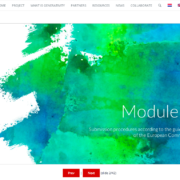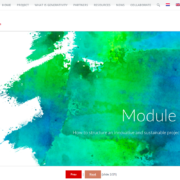Module self tests
A primary aim of the Generativity project is to help people understand all activities, actions and practices that are needed to generate and successfully execute large, often international, projects. So the self-test for Module 0 takes the form of an exercise in developing a simple project action plan using the Project Cycle Management approach. This includes identifying a suitable mentor to help with understanding, and even explaining further, particular features of PCM. Then undertaking an effective needs analysis, feasibility study, and a range of other important activities needed to generate a successful proposal.
The principle of Generativity is based on the idea of users being able to create, generate, implement or produce new material based on knowledge derived from other, more experienced, people. So we encourage you to start being generative by finding a partner/ mentor. When you have completed the exercise, consult with your mentor for further hints, tips and constructively critical comments.
You can also use the exercise to self-assess what is needed for a successful application and to gauge where you stand on your passage from trainee to experienced user. Once you are suitably experienced you can also mentor others on using the Generativity platform.
You should remember that the self-assessment tool is for your own benefit only; your work will not be evaluated. Working through this exercise will give you an opportunity to try out different approaches and to experience some of the issues you are likely to confront when preparing for, developing, and implementing a successful project proposal.
1. To start, choose from one of the following topics:
. organise a party with your friends
→ consider the nature of the party and the neighbourhood
. organise a surprise party for someone special
→ consider communication between all those involved
→ the logistics of getting everything together at the same time
. organise a dinner at your place
→ consider ‘supply and demand’ – who likes to eat what, are there any special needs?
. organise a small group vacation
→ consider the process / vacation likes and dislikes / the relevance of difference steps
. organise a public event to let others know about your achievements
→ consider the transferability and sustainability of your event
2. Having selected a topic, you should
– start with a definition of your idea, I.e. the subject / issue you want to address in your proposal. Complete a SWOT analysis (ref. Module 2)
– identify the major problems faced by the target groups and beneficiaries (i.e.: what is/are the problem/s? Whose problems?) (ref: slide 15)
– visualize the problems / aspects of the problem you want to address in the form of a diagram called a “problem tree” or “hierarchy of problems”. The “problem tree” will help you to analyse and clarify the cause–effect relationships. (ref: slides 14 & 15)
– visualize problems and causes in graphic form: the effects of a problem at the top and its causes at the bottom
→ A problem analysis provides a sound foundation on which to develop a set of relevant and focused objectives for the subsequent “project tree”. The objectives are the solutions to the previously identified problems.
– structure your findings in term of overall objectives, project purposes, expected results and activities, and make sure they offer a solution to the problems identified.
→ clearly identify your priorities
→ select your objectives one by one and complete a SMART matrix
– Transfer your findings into a logical framework structure. When you have completed the Log frame, check that the objectives are:
→ clear
→ linked to the overall project objective in a coherent way
→ all key assumptions have been made
– based on the previous steps, add operational details to the project design:
→ draw up the activity table
→ identify and assign tasks and sub-tasks
→ define time, start, duration and performances for each task and sub-task
→ create a Gantt chart to visualize the sequence and the interdependence of activities / tasks
→ complete the expenditure schedule
3. budget exercise
. Specify the required resources (ref: module 5)
→ assign resources to the different spending categories
→ Specify units and quantities
→ Evaluate unit costs
→ Identify sources of funding
→ Assign spending codes
→ Schedule costs per period
→ Calculate the total
→ Estimate the costs for project sustainability















